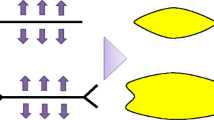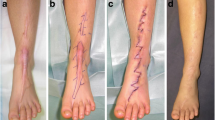Abstract
The management of postburn reconstruction is complicated by the frequent occurrence of multiple reconstructive needs in a single patient. This article presents a simple, comprehensive approach to burn scar reconstruction. The primary aim of the surgeon is to prevent burn scar deformity by rapid wound closure, correction of tissue deficiencies, and assiduous attention to postoperative splinting and compression therapy. The initial step in managing secondary deformities is to prioritize reconstructive needs. Reconstruction is then carried out in a stepwise fashion aiming to restore active function first, followed by passive function, and finally addressing aesthetic reconstruction. Reconstructive techniques are applied in a hierarchy from simplest to most complex. Primary excision and closure of scars by reorientating the scar to the lines of relaxed skin tension can significantly improve appearance. The use of z-plasty, flap repair, and tissue expansion are also reviewed. Skin expansion, in particular, has become the standard management of postburn alopecia and, although associated with a relatively high rate of complication, has significantly improved the aesthetic appearance of such patients. The management of common problems affecting the face is discussed with particular reference to management of the eyelids, oral commissure, and lips. These areas need to be reconstructed as aesthetic units and each requires individualized management of donor tissue. The reconstruction of the burn patient is often a long process requiring multiple procedures. The approach presented here advocates a stepwise, prioritized approach aiming at both maximum function as well as optimal appearance.
Résumé
La reconstruction après brûlure est souvent compliquée par le fait que plusieurs procédés de reconstruction sont nécessaires chez le même patient. Cet article présente une approche simple et globale de la refection des cicatrices dues aux brûlures. Le premier travail du chirurgien comporte la prévention des malformations secondaires aux brûlures par la fermeture rapide des plaies, la correction des pertes tissulaires et l'utilisation obligatoire des attelles et de moyens de contention. La première phase du traitement a pour but d'établir la priorité des besoins de reconstruction. La reconstruction est alors entreprise étape par étape dans le but, d'abord, de rétablir les fonctions actives, puis les fonctions passives et enfin d'améliorer l'aspect esthétique. Les techniques de reconstruction suivent une hiérarchie bien déterminée du plus simple en plus complexe. L'excision et la fermeture primitive des cicatrices orientant les cicatrices vers les lignes de relaxation maximale est un premier pas pour améliorer l'aspect morphologique. Les indications des lambeaux en Z, et de l'expansion tissulaire sont passées en revue. L'expansion cutanée est devenue une méthode standard pour le traitement de l'alopécie postbrûlure. Bien que le taux de complications soit relativement élevé, cette technique améliore grandement l'aspect physique des brúlés. La tactique opératoire des problèmes des brûlés du visage est envisagée avec une référence particulière à la reconstruction des paupières, des commissures de la bouche et des lèvres. Ces régions doivent être traitées comme des unités esthétiques et chacune d'entre elles nécessite un site donneur de tissu individualisé. La chirurgie reconstructive chez un brûlé est souvent longue et nécessite de multiples procédés. L'approche présentée ici vise une restauration maximale de la fonction et de l'aspect physique par un traitement progressif.
Resumen
El manejo de la reconstrucción de lesiones por quemadura se hace más complejo debido a los frecuentes y múltiples requerimientos de reconstrucción en el paciente individual. El presente artículo presenta un enfoque simple y comprensivo de la reconstrucción después de la cicatrización de la quemadura. El propósito primario del cirujano es prevenir la deformación por la cicatrización de quemadura mediante el cierre precoz de la herida, la corrección de las deficiencias tisulares y une vigorosa utilización de férulas y de terapia de compresión. El paso inicial en el manejo de deformaciones secundarias es establecer las prioridades en cuanto a los requerimientos de reconstrucción; la reconstrucción es luego practicada en forma secuencial para lograr función activa, seguida de función pasiva, para finalmente realizar la reconstrucción estética. Las técnicas de reconstrucción son aplicadas en forma jerárquica desde las más simples a las más complejas. La resección primaria de cicatrices y el cierre mediante la reorientación de la cicatriz hacia las lineas de relajación de la tensión cutánea puede mejorar significativamente la apariencia del paciente. También se revisa el uso de plastias en Z, la reparación con colgajos y la expansión tisular. La expansión cutánea, en particular se ha convertido en el método estándar de tratamiento de la alopecia por quemadura y aunque se asocia con una tasa de complicaciones relativamente alta, ha mejorado significativamente la apariencia de tales pacientes. El manejo de los problemas comunes que afectan la cara es tratado con referencia particular a los párpados, la comisura oral y los labios. Estas áreas deben ser reconstruidas como unidades estéticas y cada cual requiere un manejo individualizado del tejido donante. La reconstrucción del paciente quemado con frecuencia es un proceso prolongado que presenta preconiza un enfoque secuencial y de prioridades con un propósito tanto de resultados funcionales, máximos y estéticos óptimos.
Similar content being viewed by others
References
Robson, M.C.: Disturbances of wound healing. Ann. Emerg. Med.17:1274, 1988
Kischer, C.S.: Collagen and mucopolysaccharides in the hypertrophic scar. Connect. Tiss. Rev.2:205, 1974
Salisbury, R.E., Petro, J.A., Winski, F.V.: Reconstruction of the burn patient. In The Art and Science of Burn Care, J.A. Boswick, editor, Rockville, Aspen Publishers, Inc., 1987, pp. 353–357
Larson, D.L., Abston, S., Evans, E.B., Dobrkovsky, M., Linares, H.A.: Techniques for decreasing scar formation and contractures in the burn patient. J. Trauma11:807, 1971
Robson, M.C., Smith, D.J.: Reconstruction of the burned face, neck, and scalp. In The Art and Science of Burn Care, J.A. Boswick, editor, Rockville, Aspen Publishers, Inc., 1987, pp. 373–383
Brou, J.A., Robson, M.C., McCauley, R.L., Herndon, D.N., Phillips, L.G., Ortega, M., Evans, E.B., Alvaredo, M.I.: Inventory of potential reconstructive needs in the patient with burns. J. Burn Care Rehabil.6:555, 1989
Robson, M.C., Parsons, R.W.: Reconstructive and plastic surgery. In Essential Surgical Practice. A. Cushieri, G.R. Giles, and A.P. Moossa, editors, Bristol, England, John Wright and Sons, Ltd., 1982, pp. 196–210
Koss, N.: The mathematics of flap design. In Symposium on Basic Science in Plastic Surgery, T.J. Krizek, J.E. Hoopes, editors, St. Louis, C.V. Mosby Co., 1976, pp. 274–283
Robson, M.C., Smith, D.J., Heggers, J.P.: Innovations in burn wound management. In Advances in Plastic Surgery, volume 4, M.B. Habal, W.D. Morain, M.L. Lewin, R.W. Parsons, J.E. Woods, editors, Chicago, Yearbook Medical Publishers, 1987, pp. 149
Harii, K., Ohmori, K., Ohmori, S.: Utilization of free composite tissue transfer by microvascular anastomoses for the repair of burn deformities. Burns1:237, 1978
Ohmori, K.: Application of microvascular free flaps to burn deformities. World J. Surg.2:193, 1978
Wang, X.: Early vascular grafting to prevent upper extremity necrosis after electrical burns. China Med. J.97:53, 1984
Silverberg, B., Banis, J.C., Verdi, G.D., Acland, R.D.: Microsurgical reconstruction for the electrical and deep thermal injury. Proc. Am. Burn Assoc.17:129, 1985
Nappi, J.F., Lubbers, L.M., Carl, B.A.: Composite tissue transfer in burn patients. Clin. Plast. Surg.13:137, 1986
Neumann, C.G.: The expansion of an area of skin by progressive distention of a subcutaneous balloon. Plast. Reconstr. Surg.19:124, 1957
Cherry, G.W., Austad, E., Pasyk, K., McClatchey, K., Rohrich, R.J.: Increased survival and vascularity of random pattern skin flaps elevated in controlled, expanded skin. Plast. Reconstr. Surg.72:680, 1983
Rees, R.S., Nanney, L.B., Fleming, P., Carey, A.: Tissue expansion: Its role in traumatic below-knee amputations. Plast. Reconstr. Surg.77:133, 1986
Gottlieb, L.J., Parsons, R.W., Krizek, T.J.: The use of tissue expansion techniques in burn reconstruction. J. Burn Care Rehabil.7:234, 1986
Feldman, J.: Reconstruction of the Burned Face in Children. In Pediatric Plastic Surgery, D. Serafin and N.G. Georgiade, editors, St. Louis, C.V. Mosby Company, 1984, pp. 552
Warpeha, R.L.: Resurfacing the burned face. In Clinics in Plastic Surgery, Philadelphia, W.B. Saunders, Co., 1981, pp. 255–267
Brou, J., Vu, T., McCauley, R.L., Herndon, D.N., Desai, M.H., Rutan, R.L., Stenberg, B., Phillips, L.G., Robson, M.C.: The scalp as a donor site revisited. J. Trauma30:579, 1990
Smith, D.J., Robson, M.C.: Eyelid burns. In Management of Ocular, Orbital, and Adnexal Trauma, T.C. Spoor, F.A. Nesi, editors, New York, Raven Press, 1987, pp. 427–435
Converse, J.M., Smith, B.: Repair of severe burn ectropion of the eyelids. Plast. Reconstr. Surg.23:21, 1959
Silverglade, D., Zacher, J.B., Ruberg, R.L.: Improved splinting of oral commissure burns: Results in 21 consecutive patients. Ann. Plast. Surg.9:316, 1982
Gillies, H.D., Millard, D.R. Jr.: Principles and Art of Plastic Surgery, Boston Little, Brown & Company, 1957
Millard, D.R. Jr.: Columella lengthening by a forked flap. Plast. Reconstr. Surg.22:454, 1958
Baker, D.: Massive chondrocutaneous grafts for nasal reconstruction. Presentation before the American Association of Plastic Surgeons, Chicago, May 6–9, 1984
Converse, J.M.: Reconstruction of the nose by the scalping flap technique. Surg. Clin. North Am.39:335, 1959
McCauley, R.L., Oliphant, J.R., Robson, M.C.: Tissue expansion in the correction of burn alopecia: Classification and methods of correction. Ann. Plast. Surg.25:103, 1990
McCarthy, J.B., Zide, B.M.: The spectrum of calvarial bone grafting: Introduction of the vascularized clavarial bone flap. Plast. Reconstr. Surg.74:10, 1984
Schmidt, D.R., Robson, M.C.: One stage composite reconstruction using the latissimus dorsi musculo-osteocutaneous free flap. Am. J. Surg.144:470, 1982
Brent, B., Byrd, H.S.: Secondary ear reconstruction with cartilage grafts covered by axial, random, and free flaps of temporoparietal fascia. Plast. Reconstr. Surg.72:141, 1983
Robson, M.C., Smith, D.J.: Burned hand. In Plastic Surgery: Principles and Practice, M.J. Jurkiewicz, T.J. Krizek, S.J. Mathes, S. Ariyan, editors, St. Louis, C.V. Mosby Co., 1990, pp. 781–802
Krizek, T.J., Robson, M.C., Flagg, S.V.: Management of burn syndactyly. J. Trauma14:587, 1974
Linares, H.A., Larson, D.L., Baur, P.S.: Influence of mechanical forces on burn scar contracture and hypertrophy. In Symposium on Basic Science in Plastic Surgery. T.J. Krizek, J.E. Hoopes, editors, St. Louis, C.V. Mosby Co., 1976, pp. 101–127
Salisbury, R.E., Levine, N.S.: The early management of upper extremity thermal injury. In Burns of the Upper Extremity, R.E. Salisbury, B.A. Pruitt, editors, Philadelphia, W.B. Saunders, Co., 1976, pp. 36–46
Frank, D.H., Robson, M.C.: Unusual occurrence of chronic nerve compression syndromes at the wrists of thermally injured patients. Orthop. Res.8:180, 1979
Elliot, R.A. Jr.: Boutonniere deformity. In Symposium on the Hand. L.M. Cramer, R.A. Chase, editors, St. Louis, C.V. Mosby, 1971, pp. 42–54
Author information
Authors and Affiliations
Rights and permissions
About this article
Cite this article
Robson, M.C., Barnett, R.A., Leitch, I.O.W. et al. Prevention and treatment of postburn scars and contracture. World J. Surg. 16, 87–96 (1992). https://doi.org/10.1007/BF02067119
Issue Date:
DOI: https://doi.org/10.1007/BF02067119




